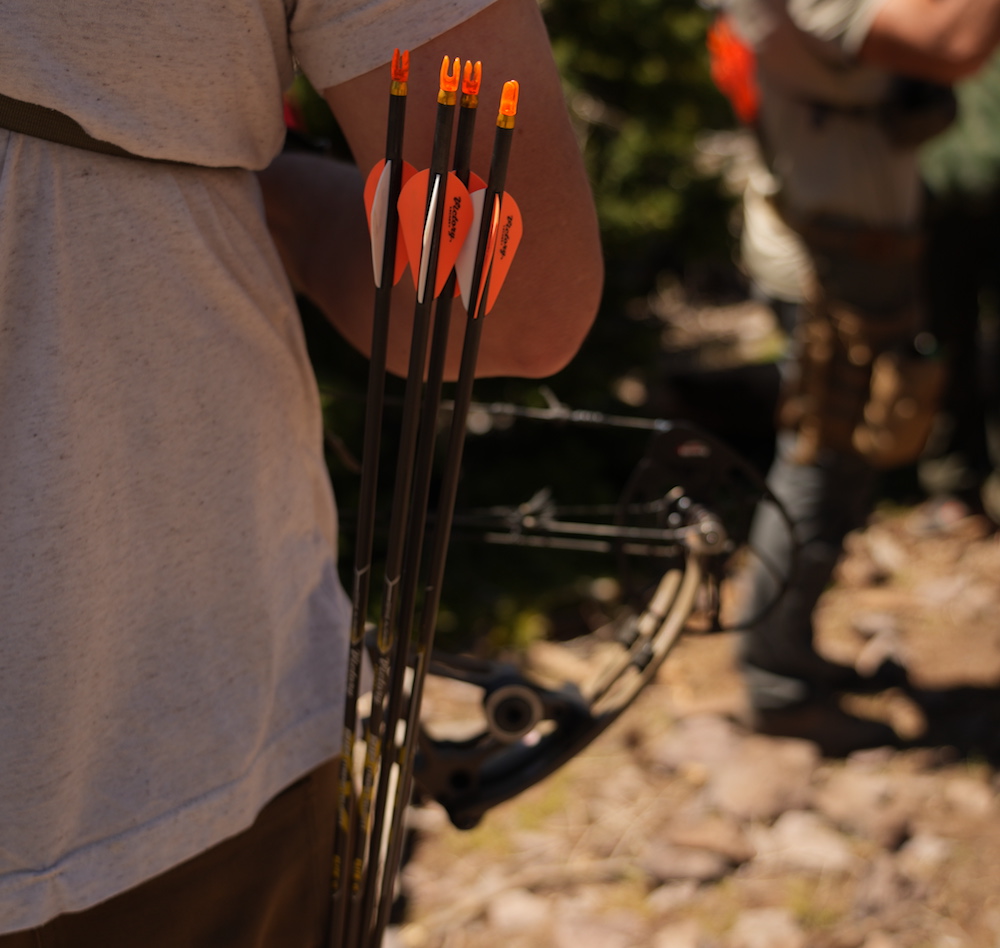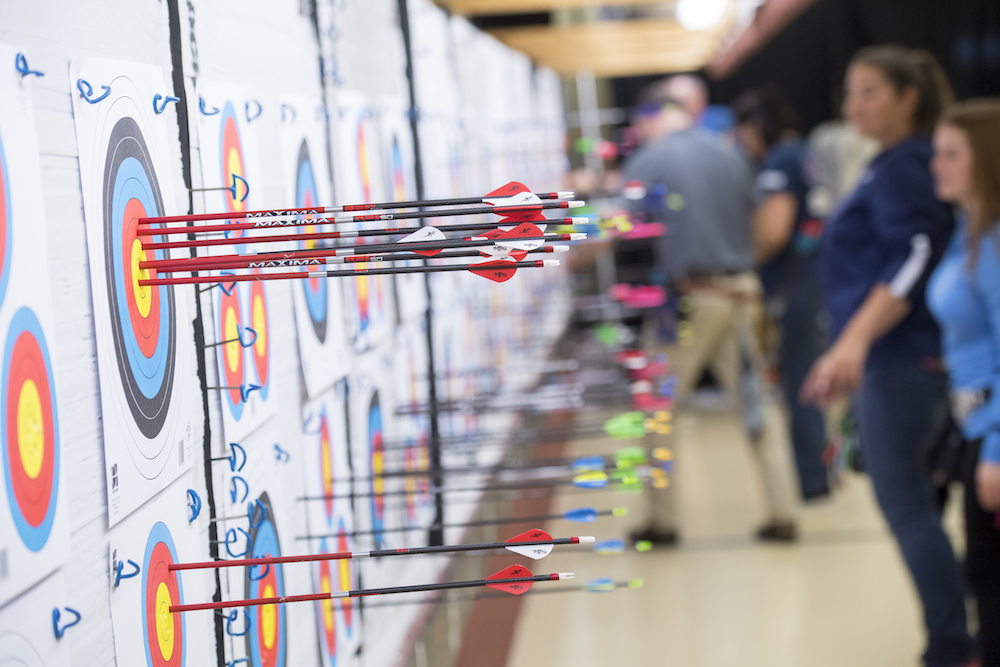Optimal arrow flight and grouping relies on more than just consistent shooting and a well-tuned bow. You should also consider the balance of the arrow. The arrow’s front-of-center (FOC) is an element that can contribute to consistent grouping across all disciplines of archery. Knowing how much weight to use in the arrow point is one of the keys that can help you decide what FOC to choose.
The FOC of an arrow is the distance between two positions on the arrow, from the midpoint of the arrow’s length to the position where the arrow balances. Due to the weight of the point, the center of gravity is naturally closer to the front of the arrow rather than in the middle. Having a balance point directly in the middle of the arrow would cause a tumbling effect during flight, meaning the arrow would not be able to maintain its direction over long distances.

The FOC of the arrow can be modified in one of two ways, with adjustments to arrow point weight and fletching size/material. Increasing the point weight or using a smaller and lighter fletching will move the balance point closer to the front of the arrow, thus increasing the FOC. Decreasing the point weight or using heavier fletching will move the balance closer to the middle of the arrow, thus decreasing the FOC. Obviously, changing the point weight, preferably with a screw-in weight system, is the easier option. Experiment until the arrows group to the desired precision. When an archer knows a certain FOC works really well for them, they’ll need to offset any changes in fletching size or weight with a corresponding change in the point weight.
Top archers all over the world will experiment with point weight until their arrows group well and give them their desired scores, and then make a note of possible FOC ranges. They don’t get too bogged down with trying to make their FOC exactly, say, 13%, but anything between 12% and 14% is an acceptable range for optimal performance.
Although a heavier point for outdoor shooting is preferred because of its ability to “track” in the wind, a point that’s too heavy can hinder archers by accentuating their inconsistencies, especially for recurve archers using their fingers to release the string. An arrow with a higher FOC can tend to nose-dive when the shot is not executed properly, and this can be magnified over a longer distance. This is the classic situation of “more is not always better.”

There is no magic FOC number that works for everyone, but something that seems to be consistent among different archers is that FOC indoors versus outdoors is always different, with indoor arrows having a higher FOC than outdoor arrows. The higher FOC for indoor arrows is usually caused by the need to increase the point weight to make a stiffer aluminum arrow tune better.
To effectively utilize the FOC, an archer should ensure that their release is as consistent as possible. No amount of FOC testing will help if the shot is not honed. Once the shot is consistent, FOC tuning will be a great asset in any archer’s tuning.



